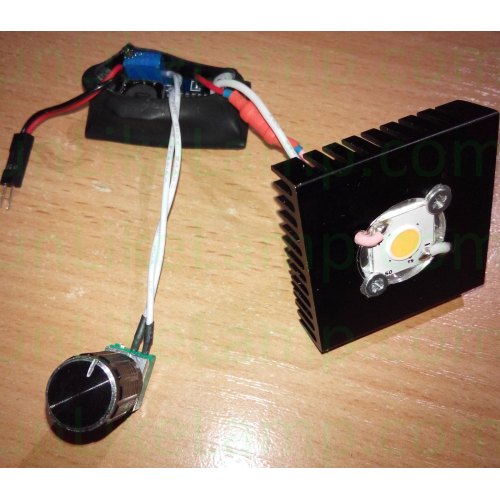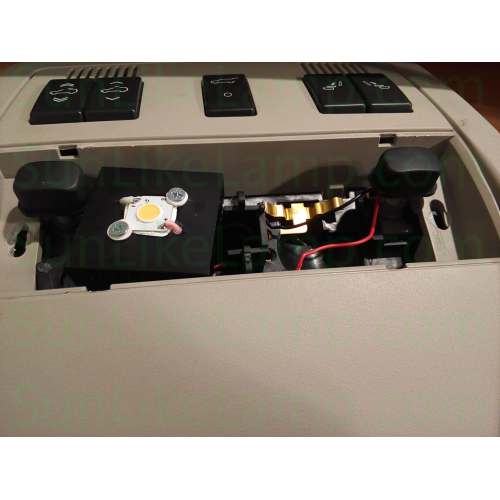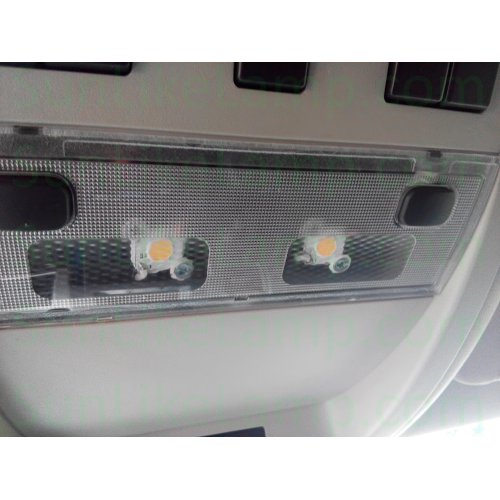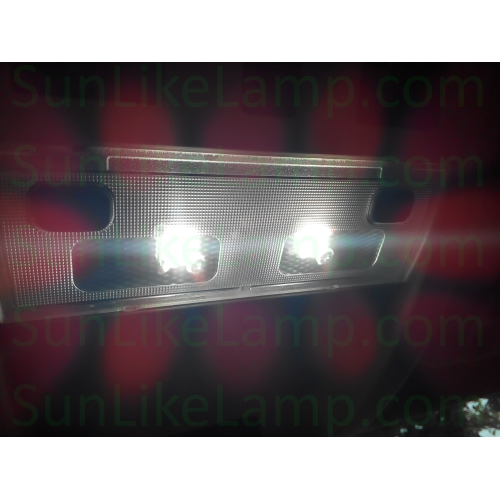the one reason why I use led in my car - it is light in the interior of my car. It is 6pcs C10W - 10w each. It is 60W. It is shine, but too much power… In another cars salon (interior) light - it is W5W. One way to do it more shine - use good LED lamp, but there is no good W5W (T10) LED lamps =(
What I want is high CRI 3500k bulbs for cars, with fully adjustable beams for consistency.
may be this?




For dome lights, I use this kind of LED panels with adapters for the bulb holder:
https://www.ebay.de/itm/Warm-White-Car-Interior-48-SMD-LED-Lamp-Light-Panel-T10-Dome-Bulb-BA9S-Adapter/232173771458
There are various sizes available, I always use the biggest which will fit behind the plexiglass panel. They work well for several years now. Sometimes the wires are not soldered, but just pressed in in the adapters. The resulting intermittant contact can be repaired by actually soldering. Not the LEDs fault though.
The other type of LED buld I made good experiences with is this:
https://www.ebay.de/itm/2X-Canbus-144SMD-BAU15S-LED-Blinker-Birnen-12V-Bernstein-Gelb/233462542894
https://www.ebay.de/itm/2x-1156-144SMD-BAU15S-PY21W-LED-Turn-Signal-Lights-Bulb-Canbus-Amber-Yellow-12V/293417003833
I use them as turn indicator, reverse lights and in the center brake light.
When being on constantly, they get hot as hell, but reduce the current after some time. There seems to be a sensor inside doing that. The heat seems to be no problem though, I ran them on a power supply for 24h straight and everything still worked. They get dimmer below 10V though. In my ancient `97 Toyota, the voltage sag with heating, lights, and rear window heating on at the same time while idling caused a voltage sag to below 10V apparently. This reduced the current the LED lights used, leading to rapid blinking. Parallel 4ohm resistors fixed that. Modern cars should have no problems with that. I still like these blinkers, they are so intense that they can be seen in reflective roadsigns.
Whenever I buy anything. I always check reviews on net first.
No reviews.
I go elsewhere. Let somebody else review/test them first.
There are a few good ones. as on here shows.
But more not so good.
you can check out ledlightupgrade.com. their automotive lighting is very high quality and engineered to work with factory housings and still provide a correct beam pattern that doesn’t blind everyone.
i tried some, they had several problems
i didn;t try the most expensive though
one problem: the terminals broke very quickly
also one thing you may run into - they do not draw the same current, so the car may think ‘these things are defective’ and do various inconvenient things
i decided it is not worth it
maybe for headlights but i have not tried yet
probably will not bother
the reduced power really doesn;t matter
they might be brighter but there is a limit to that, i mean you do not want them too bright
or a horrible blue color
or pink
which i have seen
wle
So hard pass on the Ebay ones? Sorry I’m a little slow
If you have an older car where there’s no bulb out warnings, it’s easier to install LED’s… but then it comes down to the flasher, as some base the flash rate on the current pulled and will rapid-flash with an LED replacing an incandescent bulb.
The Chinese have essentially flooded the market with crap LED’s. It’s such a huge waste, when consider all the production for simply subpar items like this. I’ve had my fair share of them burn out and abandoned LED’s for a few years.
Eventually some companies started to make reliable LED’s but for much higher cost. And some would have built-in resistors to trick the CANBUS / VAGCOM / error system. I wasn’t about to pay $44 for a pair of LED bulbs. So, I waited.
FINALLY, there are some makers producing fairly decent bulbs for low prices. Still, some just don’t last like they’re supposed to do. I’ve bought a few bulbs rated to defeat CANBUS error checking, but found they would only work with just 1 set of LED’s on the circuit. For instance, if I tried to do front & rear LED flashers, it would throw an error and I’d get rapid flashing. So, I have incandescent on the front, but LED’s in the rear. It works great. Essentially, rear will be seen much more than the front, as vehicles behind you are traveling in your direction.
I was able to find a supplier of auxiliary side turn signal markers that use multiple LED’s and do a little “animation” of the LED’s flowing forward. It’s enough current not to trip the bulb-out warning.
That was all exterior. Interior is easier, as on my car, a 2007 Audi, the CANBUS doesn’t care at all about interior bulbs. But my big beef was the temperature. 6500k is just unacceptable. Some 6000k rated LED’s are actually reported as showing a little more neutral, no bluish tinge, and that’s acceptable. But thankfully now some makers have focused on warm LED’s for interior bulbs (the festoon type). There’s just one other trick to this… DIMMING! Many of the bulbs being sold do not dim… and that’s a real bummer if you’re accustomed to a nice dim feature in your car.
I ordered a 6-pack set of Festoon style bulbs (41 mm) from Amazon. While the product description didn’t say anything about dimming, there were some reviews that said that they did. LINK.
Turns out these don’t dim, as confirmed by the seller, so I canceled. I found another set that reviewers say WILL dim, and I even asked a question that got 2 confirmations. Once I order and receive them, I’ll post about them rather than including a link now and having to edit again.
I also replaced my trunk and interior light with LED, i had found some Philips 4000K 40 lumen bulbs, way better than stock (and only 0.5W) but i would love to get 100-200 real lumens in a name brand.
The ones i got were discontinued iirc though i got some extras.
not worth it
i just get incandescents
but - they are also starting to have ‘tint’ issues
i got some that had a blue covering
light didn;t match the normal yellowish ones
wife complained
If it’s a coating, it might be possible to use micromesh and/or acetone and remove it.
For my reverse lights, I got Osram halogen bulbs. They’re wicked bright and they don’t generate a huge amount of heat. Reverse lights are meant to be temporary use anyway, so LED cost isn’t worth it. The interior festoon incandescent bulbs in my car get very hot within 10~15 seconds. After a minute, the dome plastic cover feels very warm. I don’t like this. So I’m hoping the LED’s have ordered will do the trick.
I bought a set of festoon LED light bulbs from Alopee on Amazon. They’re 2w with 18 SMD LED’s, rated 3000k in temp. I’d say they’re closer to 3500k. Nicely bright. No flicker / PWM. Nicely constructed, no flimsy qualities. $13 for a set of 6.
I’d gotten a few from AliExpress, rated at 6000k… and they’re junk. Much more like 6500k. Painful to look at. And they won’t run if power is below 2w.
Mmm, they look pretty good. Arranged as 3S6P.
Keep in mind, though, that they’re strictly 12V “bulbs”. That “9-28V” is probably that they just barely turn on at 9V, are rated for 12V/14V, and only handle spikes up to 28V (alternator dump). Anyone trying to run ’em from a 24V supply will probably cook ’em quick.
When I did a homebrew dome-lamp on perfboard, I use a similar 3S#P arrangement, too. So nominal 9V for the LEDs, which’d be pretty stable at 12V-14V with a simple ballast resistor for each string.
Those chip resistors can probably each put out more lemons than a 5mm LED.
Pretty good sign that at least these companies are putting ’em out in WW.
Yeah, I won’t be using these for any other application other than 12v (car circuits), so shouldn’t be an issue.
enough lumens can really brighten your lemons. ![]() :laughing:
:laughing:
bad experience with them
at least the cheap ones
they fail a lot
old blinker circuits do not work with them
I have recently upgraded my interior lights. This is the LED strip I used (warm white 480 LEDs/m):
https://de.aliexpress.com/item/32947409084.html
Gallery:
Remove the window, and cut out a fitting piece of 0.3mm or 0.5mm aluminium:

Apply LED strips and wire them correctly:

Put in adapter:

Assemble:

Light in the center of the car:


Light at the front (LED strip only without aluminium):


Result:

I upgraded my center brake light in a similar way.
Gallery:
I have also tried many LED bulbs for turn indicator etc. lamps, but only these are very good:
https://de.aliexpress.com/item/1005003015222910.html
They really consume 24W without severe overheating within seconds. The only downside is that they just come in white, so you need colored glass. And the thermal grease inside is too little, some needs to be added.
Apart from that, they work excellently in my car. The turn indicators are insanely bright now. For the rear fog light, I added a cheap 30mm fan as this light can work long periods of time.
These lights cannot replace bi-filament rear bulbs with combined tail light/brake light (5W/20W). So I removed the wires from the PCB inside, and added 1 negative and 2 positive wires. Each positive wire got a diode to prevent accidental polarity mismatch damage, and to decouple brake and rear light voltage. One of the positive wires got a 2W/12ohm load resistor. This is now the rear light mode (4W). The other wire was connected to the brake light directly. This mode has the full 24W. It works well this way.
Even if 100 years passes, led retrofit bulbs will still not work correctly in halogen reflectors, some tail lights bulbs work ok, but some are total junk, I would think led bulb in high beam will cause less issues than in low beam where lack of glare is very important, you blinding everyone with stock high beams anyway, so not much to ruin there, sure focus will still be off, but in high beams it may not be so critical.
Seems that oem equipment lately uses leds more and more now in all cars, some cars get led headlights even in base trim. hopefully shortage of chips will not make manufacturers go back to bulbs.
Okay, my profile pic is of the front end of my pickup truck. With the install of the switchbacks in the blinker position this spring I had completed an entire switch out of all lighting to LED. It was a lengthy process, fraught with hazards, and lessons learned. I tried to go real cheap at first and got burned. My loss could be your gain.
As I have stated previously, a great amount of research goes into any new venture before I commit any capital. I re-learned that lesson while doing this conversion. I am not here to promote any particular company’s product. These are my personal choices after thorough research and considerable contemplation.
As a couple people have pointed out, direct fit LED conversions in original halogen housings are not exactly DOT approved or road legal. As I live in Wisconsin and am not subject to any sort of DOT inspection, skirting the finer points of DOT regulation, is relatively easy. Should you choose to follow my example you do so AT YOUR OWN RISK!
When selecting your halogen replacement LEDS it is VERY important to select a type whose attachment\lock ring or collar, can be loosened from the LED assembly to adjust for proper element alignment relative to your housing. Once properly adjusted (through trial and error mostly) you can then do a final tightening of that joint to ensure bulb to housing retention and beam pattern alignment. Generally speaking, align your elements to be parallel to the ground, in doing so, you cut down on glare generating, driver blinding, and indescriminate light throwing. Also of great import is whether or not you will need any special CANBUS or Bulb out error canceling decoder for your specific vehicle. Some vehicles, like my Chrysler 200 for example, just are not a great fit for conversion no matter what you do. Most aftermarket LED headlights are not big fans of PWM…thanks Chrysler.
When it comes to LED conversion in a blinker position take into consideration the resistance drop on the included circuit. This drop will cause “hyper-flashing” like when one of your old halogens had burned out. Some manufacturers, like Toyota, have a blinker relay in the fuse panel that can simply be swapped out for an LED blinker relay. A much higher percentage will be looking at adding a resistor as mentioned previously in this thread. The replacements I used and linked, already have the appropriate resistance built in-line between terminal and bulb. This choice means it is entirely reversible without vehicle wiring alteration.
As a bonus tip to help ensure proper headlight height and symmetry:
- Park your vehicle on a level surface, facing (5-10 feet away) a nearby wall.
- Turn on your dull halogens.
- Use tape to outline your starting beam pattern on said wall. Leave the tape and vehicle in place.
- Turn everything off.
- Commence your swap.
- Once work is complete, turn on your new LEDS.
- Adjust height (on vehicle adjustment screw) to cause your much brighter LEDS to fall within the outline and\or just below the bottom of the top piece of tape from earlier.
- Wait for nightfall and go for a cruise to enjoy being a lumen freak.
I hope I’ve helped. Good luck!
These are the specific replacements used on my 2007 GMC Sierra SLT. Your fitment may vary, but I highly recommend the following brands.
Low Beams(H11) and Fog lights(5202): Amazon.com
High Beams(HB3\9005):
https://www.amazon.com/Glow-Led-Headlight-Kit-Xk045001-Hb3/dp/B07QWB15G6
Front Turn Signal\Running Lights(3157):
https://www.amazon.com/Error-Switchback-Signal-Built-Resistors/dp/B07JGMCHGT?ref\_=ast_sto_dp
Rear Turn Signal\Brake Lights(3157):
https://www.amazon.com/Canbus-Parking-Signal-Built-Resistors/dp/B07NF7NPB6?ref\_=ast_sto_dp
License Plate\Side Marker Lights(194):
https://www.amazon.com/TORYOR-Replacement-Courtesy-License-30-Pack/dp/B09GNKGTW7?pd_rd_w=sDtCi&pf_rd_p=16a720fa-f274-4149-a7dd-4f72d5fcb36e&pf_rd_r=3D1C9RF3ZGTZFKWGBAD2&pd_rd_r=1671709c-93dd-4a42-8d0d-e530f471fc7d&pd_rd_wg=V0N0Y&pd_rd_i=B09GNKGTW7&psc=1&ref\_=pd_bap_m_rp_15_sc
Map and Dome(212-2): They are cool white led…I think I got them at O’rielly Auto.
The problem with either “resistor kits” or bulbs that are “CANBUS ready” is that all too often, the resistances suck down so much current which is totally unnecessary and can actually defeat the bulb-out function, and that bulbs which have built-in resistors generate assloads of heat in the base that’s normally burnt off in the actual filament.
Most resistor kits are 6Ω, so at 12V will burn off 2A, and 14V will burn off 2.3A. That’s 24W and 32W, respectively.
There are 15W and 20W soldering-irons out there.
So even if the LEDs burned out completely, or you just unplugged the f’n bulb entirely, the happy resistor will keep on registering its dummy load and everything will look fine.
I noticed when replacing one of my rear turn-signals (dedicated amber 1-filament xx56NA bulb) with an LED bulb, it’d throw an error message on the DIC (yeah, that’s what it’s called), and “hyperflash”, but on rare occasions, it wouldn’t. So the lower load was riiiiiiight on the edge of being seen as legit. So I used… I think it was a 50Ω resistor across it, for ~280mA waste current. Enough to fool the system into thinking a bulb’s there, but not burn up anything near the resistor.
Similar issues exist with those CANBUS bulbs. I never liked ’em, and will never use ’em. Especially if all that waste heat will be burnt off in the base, cooking the contacts, socket, you name it.

